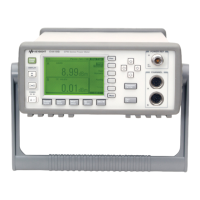Chapter 3 3-13
Making GSM Base Station Measurements
Making the Power Versus Time Measurement
Making the Power Versus Time Measurement
Purpose
Power versus Time measures the mean transmit power during the
“useful part” of GSM bursts and verifies that the bursts fit within the
defined mask. This can be used to test that other adjacent timeslots are
not experiencing interference. Power vs Time also lets you view more
than one burst at a time up to an entire frame.
Measurement Method
The Power vs Time measurement provides masks for both BTS (Base
Transceiver Station) and MS (mobile station). The timings are
referenced to the transition from bit 13 to bit 14 of the midamble
training sequence. The 0 dB reference is determined by measuring the
mean transmitted power during the “useful part” of the burst. You can
also define a user configurable limit mask to apply to the measured
burst. For further information refer to the ESA-E Series Spectrum
Analyzers GSM Measurement Personality User’s Guide.
The GSM specification defines the “useful part” of the normal GSM
burst as being the 147 bits centered on the transition from bit 13 to bit
14 of the midamble (the “T0” time point).
The instrument acquires a GSM signal in the time domain. The “T0”
point and the useful part are computed. If Burst Sync is set to
Training Seq, a GSM demodulation is performed to find “T0”. If Burst
Sync is set to
RF Amptd, an approximation of “T0” will be used without
performing a demodulation. The average power in the useful part is
then computed and displayed, and the GSM limit mask is applied. The
measurement displays Pass when the burst fits within the bounds of
the mask.

